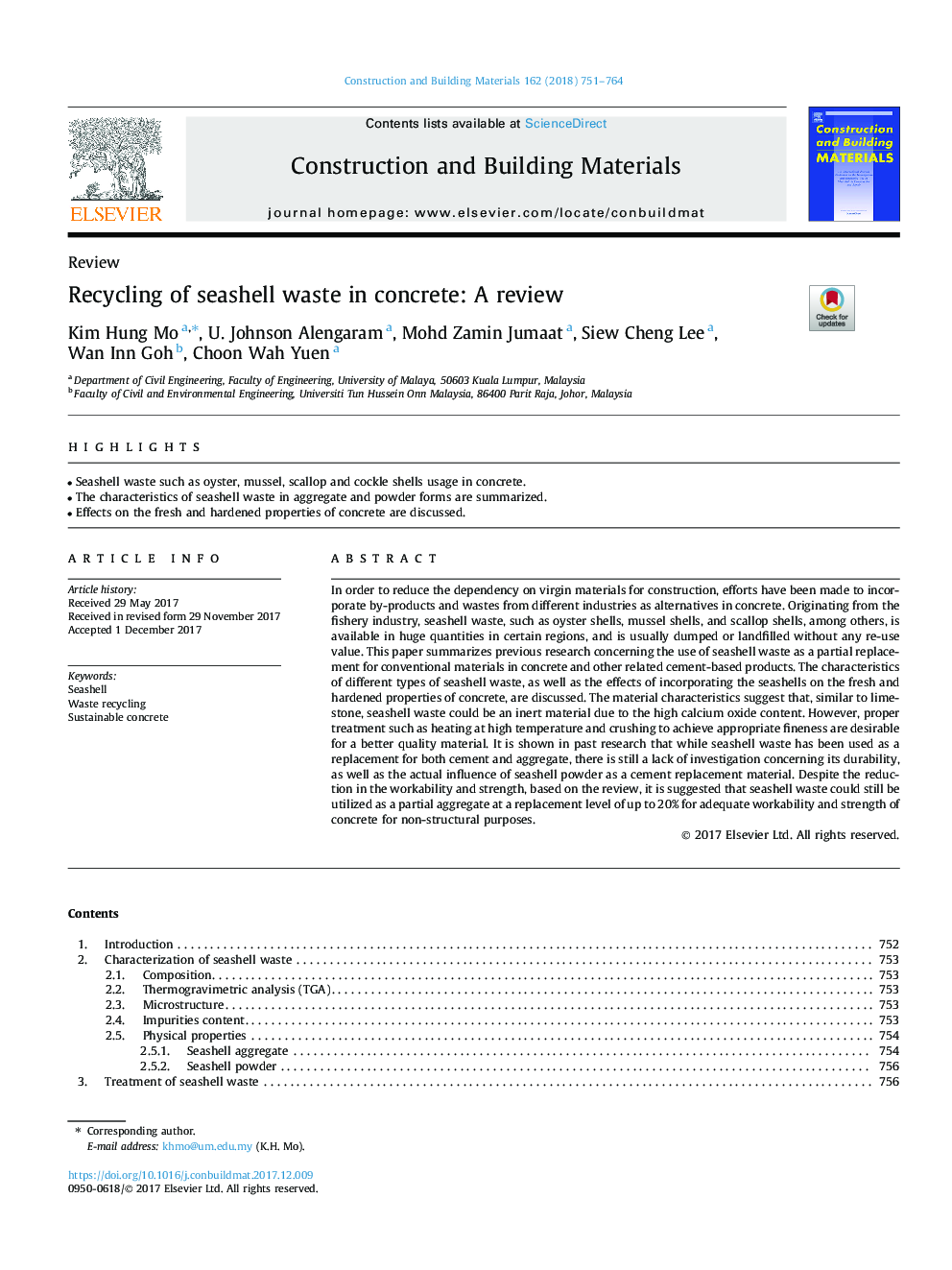| Article ID | Journal | Published Year | Pages | File Type |
|---|---|---|---|---|
| 6716381 | Construction and Building Materials | 2018 | 14 Pages |
Abstract
In order to reduce the dependency on virgin materials for construction, efforts have been made to incorporate by-products and wastes from different industries as alternatives in concrete. Originating from the fishery industry, seashell waste, such as oyster shells, mussel shells, and scallop shells, among others, is available in huge quantities in certain regions, and is usually dumped or landfilled without any re-use value. This paper summarizes previous research concerning the use of seashell waste as a partial replacement for conventional materials in concrete and other related cement-based products. The characteristics of different types of seashell waste, as well as the effects of incorporating the seashells on the fresh and hardened properties of concrete, are discussed. The material characteristics suggest that, similar to limestone, seashell waste could be an inert material due to the high calcium oxide content. However, proper treatment such as heating at high temperature and crushing to achieve appropriate fineness are desirable for a better quality material. It is shown in past research that while seashell waste has been used as a replacement for both cement and aggregate, there is still a lack of investigation concerning its durability, as well as the actual influence of seashell powder as a cement replacement material. Despite the reduction in the workability and strength, based on the review, it is suggested that seashell waste could still be utilized as a partial aggregate at a replacement level of up to 20% for adequate workability and strength of concrete for non-structural purposes.
Related Topics
Physical Sciences and Engineering
Engineering
Civil and Structural Engineering
Authors
Kim Hung Mo, U. Johnson Alengaram, Mohd Zamin Jumaat, Siew Cheng Lee, Wan Inn Goh, Choon Wah Yuen,
